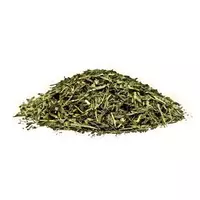Green tea

Green tea, of which China is home, is associated with numerous Asian cultures - Japanese, South Korean and Middle Eastern. In recent decades, it has also become widespread in the west, where it is mainly customary to consume black tea. Probably due to the presence of a large number of beneficial properties of green tea. It is noteworthy that many varieties of green tea, which may differ significantly, are created in the countries where they are cultivated.
Types of green tea
There are an incredible number of varieties and species of green tea, however, first of all, it is worth noting that they are mainly divided into Chinese and Japanese. The first representatives of the tea world are distinguished by a variety in the type of twisting. It can be both flattened green tea (longjing) and in the form of a pearl (gunpowder), as well as cylindrical twisted or weakly twisted (hung chi). It is noteworthy that each of these varieties of Chinese green tea is characterized by its own unique taste and aroma.
Japanese green tea species differ from Chinese in their significantly darker coloration. In addition, as a rule, they lack the aroma inherent in Chinese tea. Japanese teas of low and medium varieties are stored not so long as Chinese, but high quality, and therefore quite expensive teas of higher varieties are valued around the world.
Composition of green tea
It has been found that green tea contains polyphenols, tocopherols, carotenoids, ascorbic acid (vitamin C), minerals such as manganese, chromium, zinc and selenium, as well as some phytochemical compounds. The calorie content of green tea is 140. 9 kcal per 100 grams of dry product.
Green tea benefits
It is worth noting that the benefits of green tea for humans are even somewhat higher than the same black, because it is an even stronger antioxidant. In addition, when drinking green tea, not only the total cholesterol gradually decreases, but also the level of the so-called "good cholesterol" increases.
The benefits of green tea are particularly relevant for people who suffer from atherosclerosis, inflammatory bowel disease, malignancies, diabetes mellitus, overweight, liver disease, and even the smell of mouth.
The harms of green tea
However, with the undeniable benefit of this drink, there are a number of people for whom all the healing properties can result in the possible harm of green tea. So, for example, green tea can disrupt the heart rhythm or reduce blood pressure, and therefore it is not recommended to use it for those who suffer from heart disorders and hypotension. In addition, regular consumption of this drink can cause an exacerbation of gastrointestinal ulcer.
green tea 140.9 kCal
Energy value of green tea (Ratio of proteins, fats, carbohydrates - ju):
Proteins: 20 g (~ 80 kCal)
Fats: 5.1 g (~ 46 kCal)
Carbohydrates: 4g (~ 16kCal)
Energy ratio (b | y): 57% | 33% | 11%
 Español
Español Français
Français Português
Português Русский
Русский 简体中文
简体中文 繁體中文
繁體中文 日本語
日本語 한국어
한국어 العربية
العربية Türkçe
Türkçe Қазақ
Қазақ Deutsch
Deutsch Italiano
Italiano Українська
Українська
